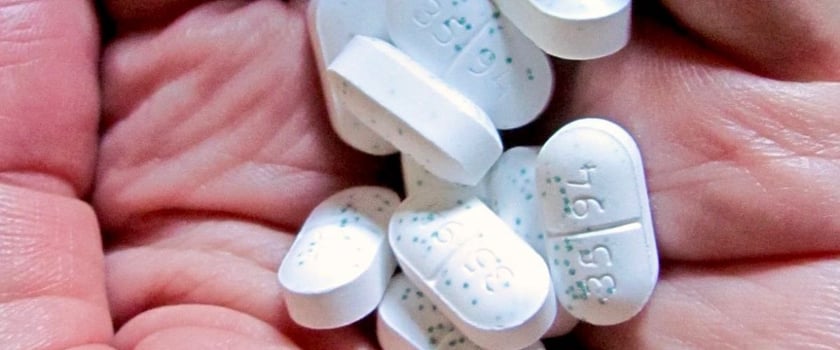 Misuse of opioid painkillers such as Vicodin has reached epidemic proportions in rural Colorado
Misuse of opioid painkillers such as Vicodin has reached epidemic proportions in rural Colorado
The places hit hardest by the opioid epidemic often have the fewest resources to fight it. Places like rural Colorado, where doctors in small towns are on the front lines and need reinforcements.
[cucalloutbox align="left" color="" class="" size=""]
CU Anschutz fights the opioid epidemic
This is the fourth in a series of articles that examines how University of Colorado Anschutz Medical Campus faculty and students are finding ways to solve the opioid epidemic.[/cucalloutbox]
That is a problem Liliana Tenney, MPH, an instructor at the Colorado School of Public Health (ColoradoSPH) and deputy director of the Center for Health, Work & Environment, knows must be solved.
“There are a lot of primary care physicians in rural areas across the state who are facing significant challenges when it comes to the opioid epidemic,” Tenney said. “It’s the rural providers, the ones that have less time and access to resources, who need the most help.”
Tenney is one of many University of Colorado Anschutz Medical Campus researchers and faculty working on the epidemic. She believes using online training programs and telemedicine offer effective ways to reach rural doctors and help them fight the epidemic.
Taking opioid education online
Together with colleagues in the ColoradoSPH Center for Health, Work & Environment, Tenney developed one of the first internet-based classes teaching doctors about alternatives to prescribing opioid painkillers such as Vicodin and OxyContin to manage non-cancer chronic pain patients.
 Liliana Tenney MPH
Liliana Tenney MPH
Tenney said the course, “The Opioid Crisis: Guidelines and Tools for Improving Chronic Pain Management,” was designed with rural doctors in mind.
“We decided early on that we wanted to develop an online training so that we could reach providers all across the state who didn’t have access to big conferences or the time to go,” she said.
After a few years of work, she sees signs of success. More than 3,000 doctors have taken the course since it debuted a few years ago. Follow-up surveys showed doctors were using the information in their practice, had begun checking the state’s database of prescription drugs, and had started discussing with patients how to safely use, store and dispose of opioids.
“It’s been really encouraging to see the results and what’s happening in terms of education,” Tenney said.
Telemedicine and treatment
[perfectpullquote align="right" cite="" link="" color="" class="" size=""]
Opioid abuse by the numbers
188 people died in Colorado from misusing opioids such as Vicodin and OxyContin in 2016
Colorado ranks 15th in the nation for opioid abuse—down from second in 2011
[/perfectpullquote]
Tenney is now co-chair of the Colorado Consortium for Prescription Drug Abuse Prevention’s provider education work group. One of its missions is to find ways to reach and educate all prescribers in rural areas and mountain towns including doctors, dentists and even veterinarians. Now, they are working to use telemedicine to help doctors help their patients overcome addiction.
The consortium is considering expanding an initiative named Project ECHO (Extension for Community Health Outcomes in Colorado). It uses video conferencing to bring together small groups of doctors. Experts discuss best practices or the latest research, and doctors can present tough cases to their peers.
The meetings could replicate in-depth, interdisciplinary case conferences, which are common at medical schools and large hospitals but less common for rural physicians.
“In a lot of these communities, they don’t have these types of resources,” Tenney said.
Despite the challenges, doctors are committed to fighting the epidemic while making sure their patients have the medications they need to be well.
“The medical community knows they need to take action,” Tenney said. “I think we’re making a lot of progress in preventing opioid misuse and abuse. On both the prevention and treatment side, I think there’s still a lot to do.”
Providers interested in learning more about how to prevent opioid misuse can visit ucdenver.edu/chwe/preventingrxabuse to learn more about the Center for Health, Work & Environment’s online training.




